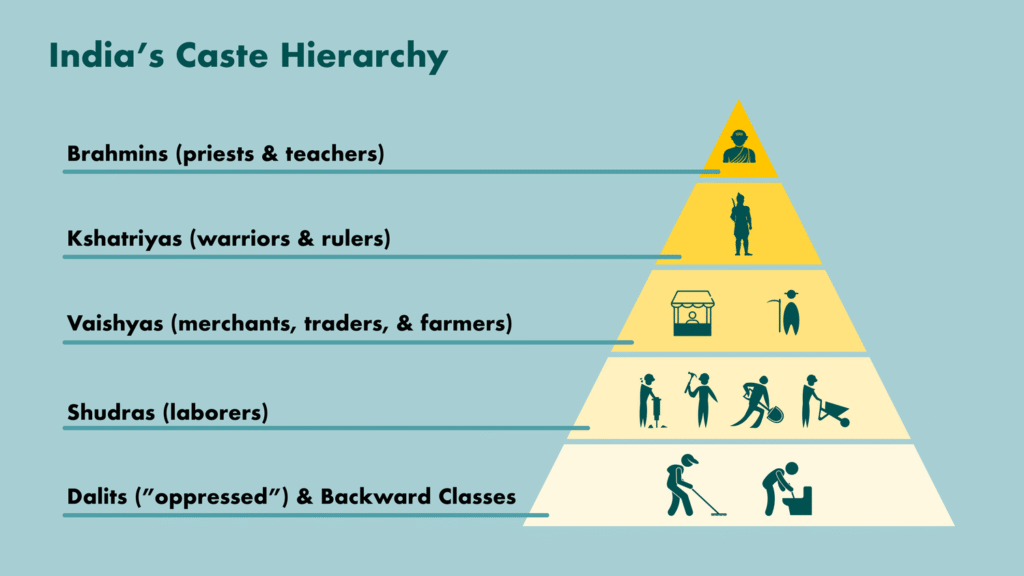In exploring Indian society and economy in early medieval period, we uncover a fascinating era marked by social transformation, economic resurgence, and cultural vibrancy. This period, spanning approximately from the 6th to the 13th century CE, saw the emergence of regional kingdoms, agrarian advancements, urban growth, and evolving social dynamics.
1. Historical Context
The study of Indian society and economy in early medieval period helps us understand how fragmented regional powers, such as the Chandellas, Cholas, Palas, Rashtrakutas, and the Delhi Sultanate preluded to later medieval India. This era followed the decline of classical empires like the Gupta and Harsha, leading to decentralized political structures.
2. Agrarian Economy & Land Revenue
Central to Indian society and economy in early medieval period was the agrarian system. Land became the primary source of wealth as agriculture expanded through improved irrigation—tank systems, canals, and wells—leading to higher productivity. These innovations supported settled habitation, helped grow regional centers, and ensured surplus generation. The brahmadeya system granted land to Brahmins, which fostered village education and literacy.
3. Trade & Urban Growth
Commerce thrived in the Indian society and economy in early medieval period due to inland and maritime trade. Key ports like Kalyan, Brahmapur, Tamralipti, and Calicut saw bustling trade with Arab, East African, and Southeast Asian merchants, exporting spices, textiles, and precious stones. Coastal trade brought wealth to urban centers, fueling cultural exchange and material prosperity.
4. Emergence of Guilds
The Indian society and economy in early medieval period witnessed the rise of powerful artisan and merchant guilds—shrenis—which regulated trade, protected artisan interests, and financed public works. They played key roles in urban planning, temple building projects, and even in funding education and pilgrimage routes.
5. Currency & Monetization
Monetization marked a major shift in Indian society and economy in early medieval period. Copper coins like the taka and dinar (gold), facilitated trade across regions. These coins featured religious symbols and inscriptions, reflecting political and religious dynamics and indicating the rise in long-distance trade.
6. Caste & Social Hierarchy
When analyzing Indian society and economy in early medieval period, one notes the solidification of caste hierarchy. While the varna-jati system persisted, new occupational castes emerged. Mobility was limited, but the system adapted: merchant castes (e.g., Baniyas), agrarian castes, artisan castes, and caste-based guilds shaped village economies and local markets.
7. Role of Women
Exploring Indian society and economy in early medieval period reveals a nuanced role for women. In agrarian settings, women managed households, contributed to farming, and took part in cottage industries. In urban settings, women from artisan families sometimes led guilds, managed markets, or even owned property. Temple inscriptions mention women donors and patrons.
8. Temple Economy & Patronage
The Indian society and economy in early medieval period was closely linked with temple networks. Temples were not just religious centers—they functioned as banks, landowners, employers, and designers of irrigation systems. Temple economies contributed significantly to rural development and periodically funded artistic and scholarly activities.
9. Education & Charitable Institutions
As Indian society and economy in early medieval period flourished, so did Buddhist universities like Nalanda, Vikramashila, and Odantapuri in the east. While these thrived from earlier times, they continued along with Hindu pathshalas. Land grants from kings and patronage funds supported scholars, feeding into the economy and society.
10. Cultural Influence & Artistic Flourishing
The Indian society and economy in early medieval period laid the foundation for cultural syncretism. Temple architecture (e.g., Chola, Pallava, Pala) and regional styles flourished due to local prosperity. Trade wealth, temple patronage, and guild sponsorships encouraged artistic expression and scholarly pursuits.
11. Challenges & Transitions
Despite prosperity, the Indian society and economy in early medieval period also faced invasions (e.g., Rajputs, Turkic invasions) and political instability. These shaped land revenue systems and urban centers. Continued changes, like the shift to sharper taxation and coin control, prepared the ground for the Delhi Sultanate.
📌 Key Takeaways
Improved irrigation & land grants: core to Indian society and economy in early medieval period.
Expanding trade (inland and maritime) boosted urban centers.
Artisans, merchants, guilds, and caste groups drove local economies.
Women played essential roles in households and trade.
Temples served as economic engines and cultural patrons.
Coins and monetization facilitated interregional trade.
Universities matured due to royal grants and economic stability.
Political upheavals led to institutional transformations.
✅ Conclusion
Understanding the Indian society and economy in early medieval period offers deep insights into how regional kingdoms, agrarian systems, caste structures, and trade networks shaped the foundation of medieval India. For students preparing for UPSC, SSC, Banking, and Railway exams, this topic is not only historically important but also frequently asked in competitive exams. By grasping the key developments of this era, aspirants gain a strong conceptual edge in history and general studies.


I really enjoy studying on this internet site, it has got fantastic content.